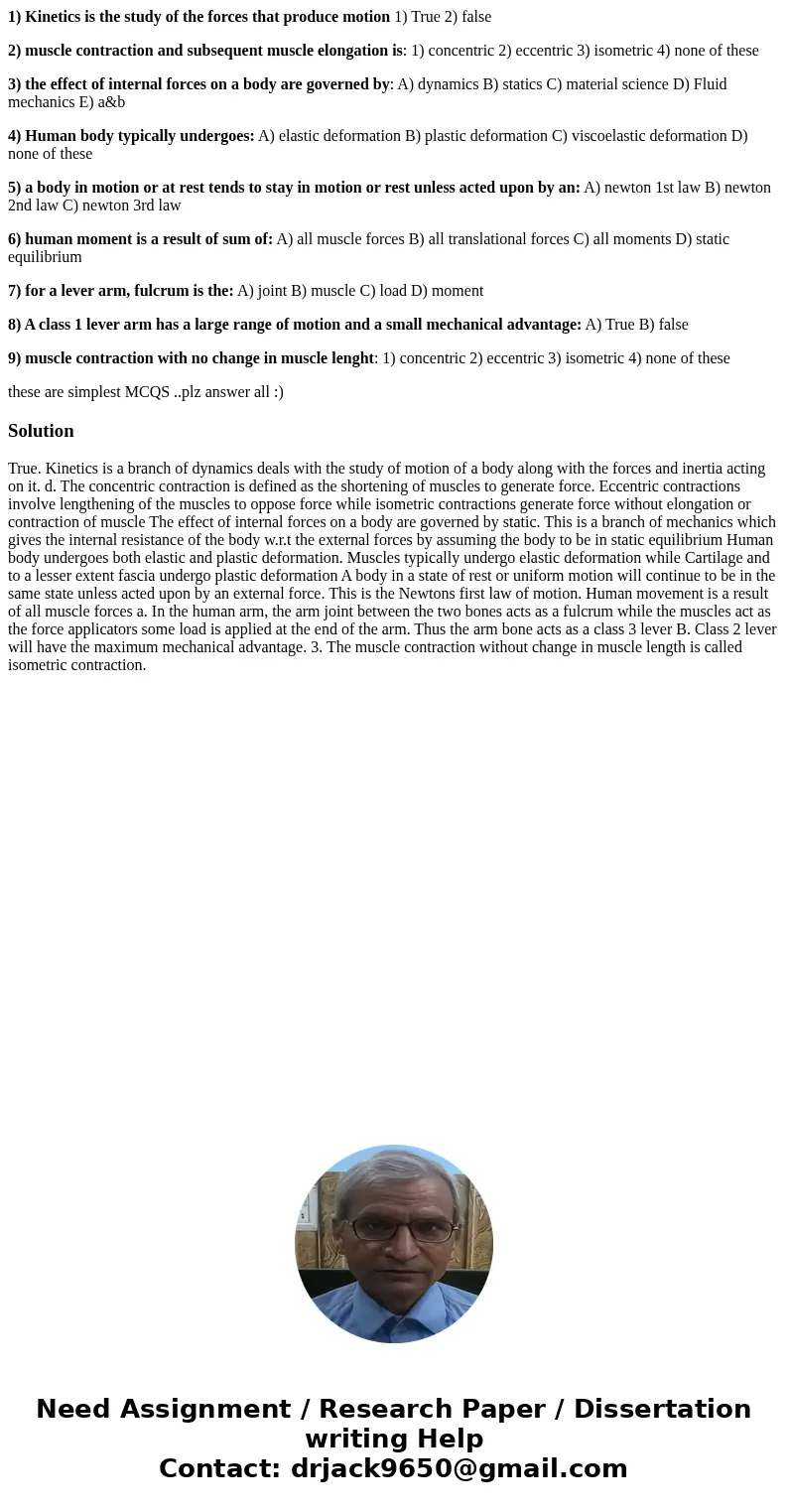1 Kinetics is the study of the forces that produce motion 1
1) Kinetics is the study of the forces that produce motion 1) True 2) false
2) muscle contraction and subsequent muscle elongation is: 1) concentric 2) eccentric 3) isometric 4) none of these
3) the effect of internal forces on a body are governed by: A) dynamics B) statics C) material science D) Fluid mechanics E) a&b
4) Human body typically undergoes: A) elastic deformation B) plastic deformation C) viscoelastic deformation D) none of these
5) a body in motion or at rest tends to stay in motion or rest unless acted upon by an: A) newton 1st law B) newton 2nd law C) newton 3rd law
6) human moment is a result of sum of: A) all muscle forces B) all translational forces C) all moments D) static equilibrium
7) for a lever arm, fulcrum is the: A) joint B) muscle C) load D) moment
8) A class 1 lever arm has a large range of motion and a small mechanical advantage: A) True B) false
9) muscle contraction with no change in muscle lenght: 1) concentric 2) eccentric 3) isometric 4) none of these
these are simplest MCQS ..plz answer all :)
Solution
True. Kinetics is a branch of dynamics deals with the study of motion of a body along with the forces and inertia acting on it. d. The concentric contraction is defined as the shortening of muscles to generate force. Eccentric contractions involve lengthening of the muscles to oppose force while isometric contractions generate force without elongation or contraction of muscle The effect of internal forces on a body are governed by static. This is a branch of mechanics which gives the internal resistance of the body w.r.t the external forces by assuming the body to be in static equilibrium Human body undergoes both elastic and plastic deformation. Muscles typically undergo elastic deformation while Cartilage and to a lesser extent fascia undergo plastic deformation A body in a state of rest or uniform motion will continue to be in the same state unless acted upon by an external force. This is the Newtons first law of motion. Human movement is a result of all muscle forces a. In the human arm, the arm joint between the two bones acts as a fulcrum while the muscles act as the force applicators some load is applied at the end of the arm. Thus the arm bone acts as a class 3 lever B. Class 2 lever will have the maximum mechanical advantage. 3. The muscle contraction without change in muscle length is called isometric contraction.
 Homework Sourse
Homework Sourse